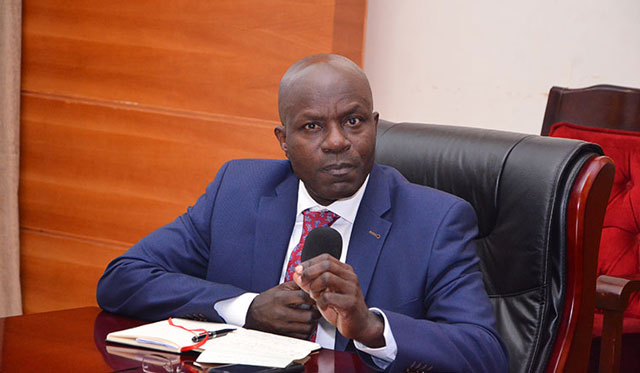
Kampala, Uganda | THE INDEPENDENT | The Ministry of Education has initiated a process to track and name schools that concealed COVID-19 which later saw a surge of cases in schools.
The initiative according to Alex Kakooza, the permanent secretary Ministry of Education, is part of their efforts to prepare for the reopening of educational institutions at the end of the current school closure induced by the second wave of the pandemic.
Before the second school closure, it had been discovered that many schools had concealed COVID-19 cases triggering a time bomb. But, what could have gone wrong in the first place yet there were clear guidelines and protocols?
“The matter has been blamed on headteachers and school owners. However, the problem is way bigger than that. We all failed as a system. if everyone played his or her part, we couldn’t have reached at that point,” says Rashid Kikomeko, the Mukono District Education Officer.
According to the Ministry of Education guidelines, there was a chain of protocols enforced by different taskforces that were supposed to raise a red flag when a suspected case of coronavirus disease was detected in a school.
Schools which had met all the requirements for reopening were told to form COVID-19 taskforces as the internal and first line of defense. The said taskforces comprised of school management committee members, teachers, and learner’s representatives were charged with filing weekly reports including daily temperature recordings, learners with suspected COVID-19 symptoms, and other normal diseases.
“The education inspectors had to collect these reports and also make other observations. These reports could be forward to the district task forces and in case of a suspected case, they would handle over to the surveillance teams for follow-up,” says Kikomeko.
He further adds that local governments have few inspectors who could not reach out to all schools as planned. “There were tendencies of corruption where some inspectors connived with schools to conceal the cases. However, even reaching out to all these schools was difficult. We have limited staff. We tried to back them up with some retired teachers but this couldn’t help.”
The Masaka City Education Officer Stephen Kakeeto attests that where the protocols were followed, suspected and positive cases could be detected, managed and also prevent further infections. He says since the whole system failed, the blame should be put on both the district and school owners.
Kakeeto adds that to prevent the manipulation of reports, schools had been twinned to a health centre or hospital that had to regularly visit the school carries out person monitoring.
“They were also supposed to carry out spot-on surveillances. But, they couldn’t do this monitoring due to limited funding. Still, some health institutions had been attacked by many schools, making it difficult to make regular follow-ups. That was also a weak point,” said Kakeeto.
Another challenge arose from schools as the heads refused to reveal students who had symptoms of COVID-19. Frederick Kinobe Kiyingi, Chairperson of the district education officer association says that after the surge, headteachers said they thought that students were suffering from normal flu.
“This was a huge problem. The guidelines were clear; if a learner develops symptoms should be reported to the task force. The delay to report caused widespread infections among schools,” says Kiyingi.
Kiyingi adds that other schools also refused to isolate learners suspected to be with covid19. “They had to put such cases in isolation rooms that were created. But, we have now established that some schools were keeping such learners in dormitories.”
John Chrysostom Muyingo, the Minister state in charge of higher education, also acknowledges that there was a big gap in surveillance and monitoring. As many education officer notes, Muyingo also agrees that limited funding could have been one of the gaps.
The minister says that as they prepare for reopening, they have already decided on increasing the funding to the inspection unit.
****
URN
The post COVID-19: What went wrong with the school surveillance protocols? appeared first on The Independent Uganda:.
from The Independent Uganda: https://ift.tt/3yMBMy8

0 Comments